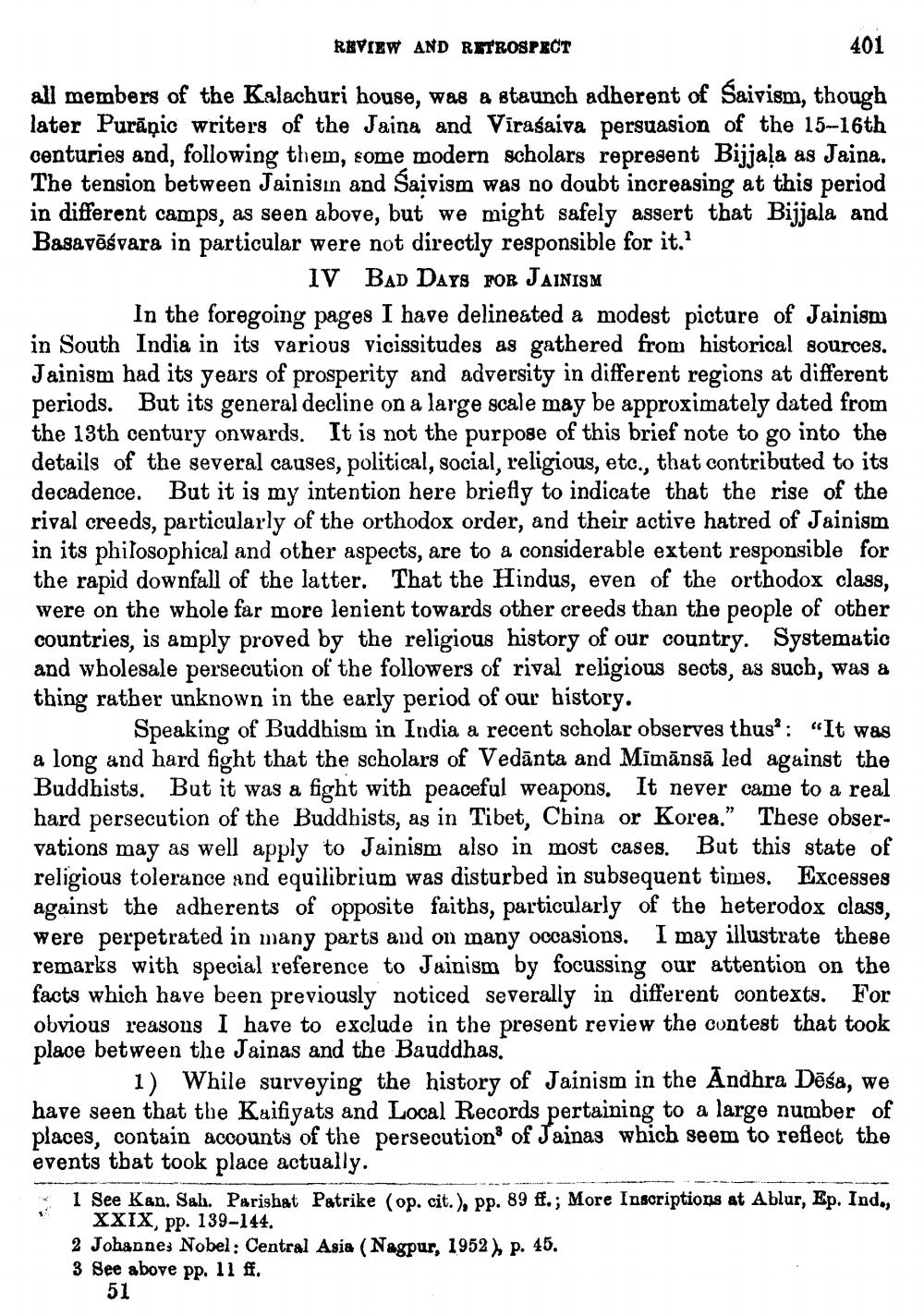________________
REVIEW AND RETROSPECT
401
all members of the Kalachuri house, was a staunch adherent of Saivism, though later Puranic writers of the Jaina and Virasaiva persuasion of the 15-16th centuries and, following them, some modern scholars represent Bijjala as Jaina. The tension between Jainisin and Saivism was no doubt increasing at this period in different camps, as seen above, but we might safely assert that Bijjala and Basavesvara in particular were not directly responsible for it.'
IV BAD DAYS FOR JAINISM
In the foregoing pages I have delineated a modest picture of Jainism in South India in its various vicissitudes as gathered from historical sources. Jainism had its years of prosperity and adversity in different regions at different periods. But its general decline on a large scale may be approximately dated from the 13th century onwards. It is not the purpose of this brief note to go into the details of the several causes, political, social, religious, etc., that contributed to its decadence. But it is my intention here briefly to indicate that the rise of the rival creeds, particularly of the orthodox order, and their active hatred of Jainism in its philosophical and other aspects, are to a considerable extent responsible for the rapid downfall of the latter. That the Hindus, even of the orthodox class, were on the whole far more lenient towards other creeds than the people of other countries, is amply proved by the religious history of our country. Systematic and wholesale persecution of the followers of rival religious sects, as such, was a thing rather unknown in the early period of our history.
Speaking of Buddhism in India a recent scholar observes thus: "It was a long and hard fight that the scholars of Vedanta and Mīmānsā led against the Buddhists. But it was a fight with peaceful weapons. It never came to a real hard persecution of the Buddhists, as in Tibet, China or Korea." These observations may as well apply to Jainism also in most cases. But this state of religious tolerance and equilibrium was disturbed in subsequent times. Excesses against the adherents of opposite faiths, particularly of the heterodox class, were perpetrated in many parts and on many occasions. I may illustrate these remarks with special reference to Jainism by focussing our attention on the facts which have been previously noticed severally in different contexts. For obvious reasons I have to exclude in the present review the contest that took place between the Jainas and the Bauddhas.
1) While surveying the history of Jainism in the Andhra Dēśa, we have seen that the Kaifiyats and Local Records pertaining to a large number of places, contain accounts of the persecution of Jainas which seem to reflect the events that took place actually.
1 See Kan. Sah. Parishat Patrike (op. cit.), pp. 89 ff.; More Inscriptions at Ablur, Ep. Ind., XXIX, pp. 139-144.
2 Johannes Nobel: Central Asia (Nagpur, 1952), p. 45.
3 See above pp. 11 ff.
51




